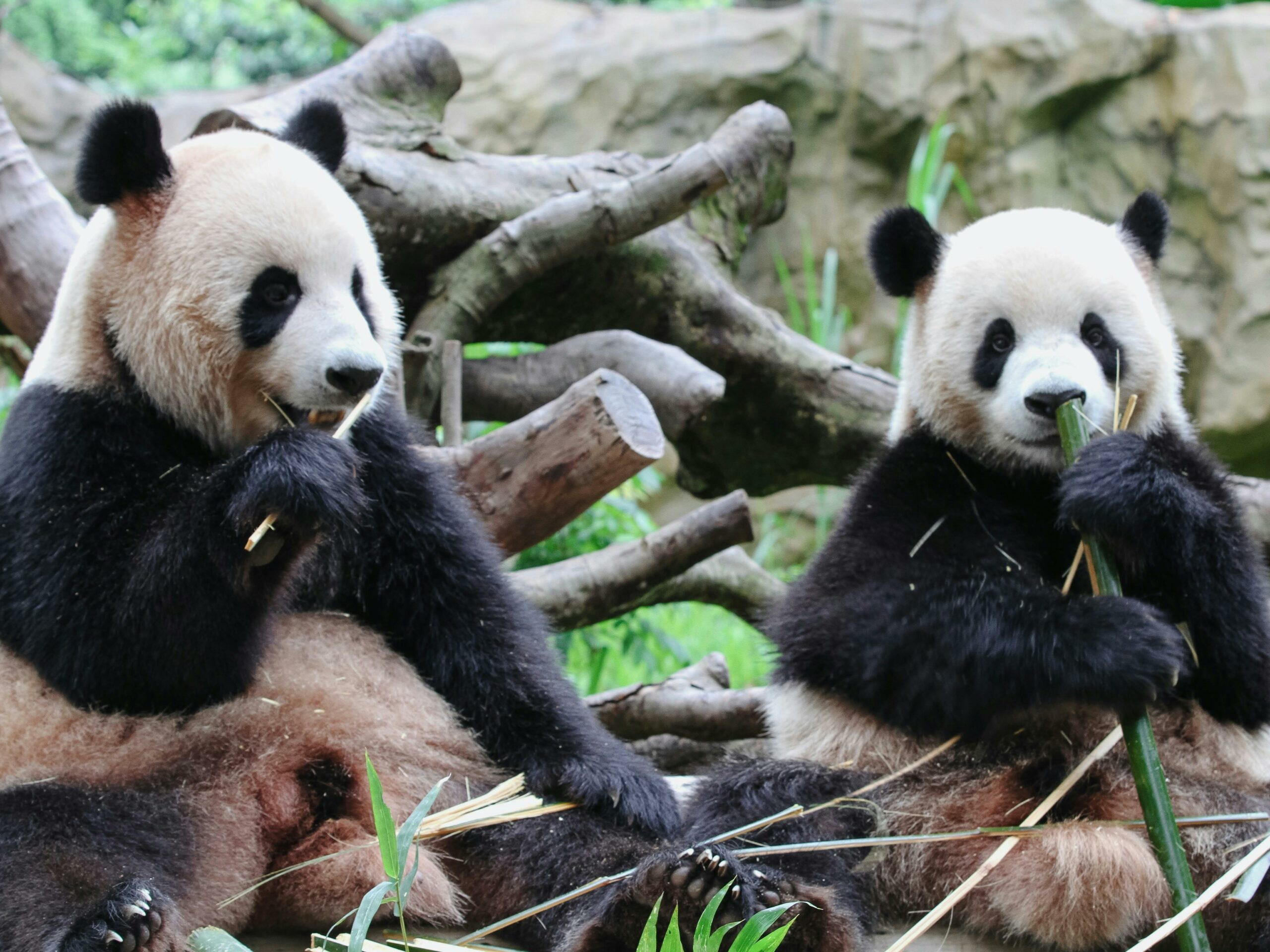Giant Panda
Ailuropoda melanoleuca

At the Zoo
We are preparing for the return of giant pandas to the Zoo! Please follow the Zoo’s social media channels for the latest information.
Fascinating Facts
- Giant pandas don’t hibernate like some other bears. Instead, they travel to warmer climates to find better sources of bamboo.
- The average age of giant pandas is around 20 years in the wild and up to 30 years in a zoo or sanctuary.
- Because of the large volume of bamboo consumed on a daily basis, giant pandas defecate an average of 40 times per day.
Physical Characteristics
Giant pandas are widely recognized by their distinctive black-and-white fur coats, which serve as camouflage in both winter and summer environments. The black shoulders and legs help conceal giant pandas in shade, while the white areas help them blend into the winter snow. The thick fur is waterproof to keep them warm and dry. Another distinctive feature of giant pandas are their round faces, which are a result of powerful jaw muscles used to crush tough stems and grind fibrous plant material. Giant panda paws have a digit similar to a thumb for holding bamboo while eating. Adult individuals are typically 3 ft 11 inches to 6ft 3 inches long, and weigh an average of 220 to 254 lbs.
Habitat/Diet
Giant pandas are found in small populations in six mountainous regions in China, mainly in Sichuan, Shaanxi and Gansu. They are typically recorded at elevations of 7,000 – 9,800 ft above sea level in habitats with a healthy concentration of bamboos.
The diet of giant pandas consists almost entirely of bamboo, despite their taxonomic classification as a carnivoran. Like other bears, their stomachs evolved for them to be meat eaters, so they derive little energy from consumption of bamboo. Therefore, they need to eat around 66 lbs of bamboo on a daily basis to absorb enough protein, sometimes feeding for up to 16 hours a day.
Social Behavior
Giant pandas are generally solitary animals, gathering primarily during the brief mating season between March and May. During this time, females go into estrus, which occurs only once a year and lasts for two or three days. After mating, the female is left alone to raise the cub while the male retreats to a solitary and defined territory.
Giant pandas largely communicate with one another through scent marking such as spraying urine on landmarks and clawing trees. The scent marks are used to spread information about mating status, territorial dominance, choice of settlement, and other social situations. They also communicate through a variety of vocalizations based on the social circumstance, such as blatting sounds during peaceful interactions, chirping during mating season, and growls during hostile confrontations.
Status In The Wild
Giant pandas are listed as Vulnerable by the IUCN, with fewer than 2,500 left in the wild. They have been driven out of lowland areas by human activity such as farming, deforestation and land development. Human activities remain the biggest threat to this species, including the man made effects of climate change. Diseases from livestock and domesticated pets is another threat, enhanced by increased human settlements near panda habitats.
